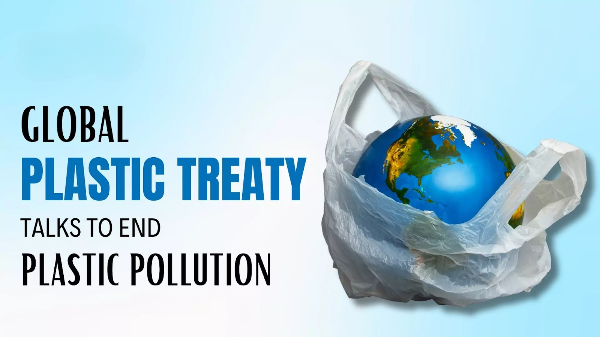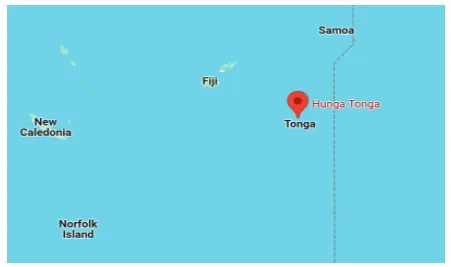Tuesday, 11th June 2024
CIC Jurisdiction over MPLADS Funds
Why in the News?
- Recently, the Delhi High Court ruled that the Central Information Commission (CIC) does not have jurisdiction to comment on the utilisation of funds under the Members of Parliament Local Area Development Scheme (MPLADS).
Court’s Ruling:
- The Delhi High Court determined that the Central Information Commission (CIC) lacks jurisdiction to comment on the utilisation of funds by Members of Parliament (MPs) under the Members of Parliament Local Area Development Scheme (MPLADS).
- The scope of the Right to Information (RTI) Act is confined to providing access to information under the control of public authorities.
- The court clarified that under Section 18 of the RTI Act, the CIC can "only address issues pertaining to the information requested under the RTI Act or any other matter leading to the disclosure of information as requested by the applicant."
- However, the court upheld a portion of the CIC's order instructing the public authority to disclose details of funds allocated MP-wise, Constituency-wise, and projectwise under the RTI Act.
What is the MPLADS Scheme?
- About MPLADS:
- MPLADS is a Central Sector Scheme introduced in 1993.
- Objective:
- It empowers Members of Parliaments (MPs) to propose developmental projects aimed at creating durable community assets in various sectors such as drinking water, primary education, public health, sanitation, roads, etc., primarily within their constituencies.
- Expansion of Scope:
- Since June 2016, MPLAD funds can also be utilised for implementing schemes like Swachh Bharat Abhiyan, Accessible India Campaign (Sugamya Bharat Abhiyan), rainwater harvesting for water conservation, and Sansad Aadarsh Gram Yojana.
- Implementation:
- The concerned Nodal District Authority is responsible for executing the eligible projects recommended by the MPs and maintaining records of the works completed and funds expended under the Scheme.
- Functioning:
- MPs receive Rs. 5 crore annually, disbursed in two instalments of Rs. 2.5 crore each. MPLAD funds are non-lapsable.
- Lok Sabha MPs recommend projects to the district authorities within their Lok Sabha constituencies, while Rajya Sabha MPs utilise the funds in the states that have elected them to the House.
- Nominated Members of both the Rajya Sabha and Lok Sabha can recommend projects anywhere in the country.
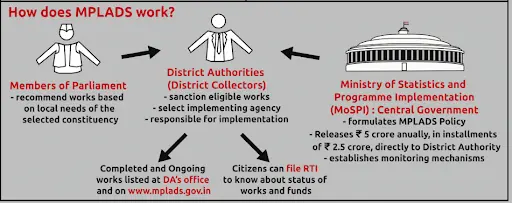
Concerns Regarding MPLADS:
- Breach of Federalism:
- MPLADS is seen as encroaching upon the domain of local self-governing institutions, thus violating the principles outlined in Part IX and IX-A of the Constitution.
- Implementation Lapses:
- The scheme enables MPs to use funds for patronage, resulting in discretionary spending. The CAG has noted cases of financial mismanagement and inflated expenditure.
- Critics argue that the scheme fosters a nexus between MPs and private firms, resulting in the misuse of funds for private projects, allocation to ineligible agencies, and diversion of funds to private trusts.
- Lack of Statutory Backing:
- MPLADS operates without any statutory law governing it, making it vulnerable to arbitrary changes by the ruling government.
- Criticism and Recommendations:
- The National Commission to Review the Working of the Constitution (2002) and the 2nd Administrative Reforms Commission (2007) have recommended the termination of the scheme.
- Critics argue that MPLADS is incompatible with the division of power between the central and state governments, as outlined in the Constitution
Key Events:
- Central Information Commission (CIC) Order, 2018:
- In 2018, the CIC raised concerns about MPs saving MPLADS funds until their term's end, possibly for electoral advantage.
- CIC's Recommendations:
- The CIC recommended measures to MoSPI to prevent perceived fund abuse, proposing guidelines for equal MPLADS fund distribution throughout MPs' five-year terms.
- Legal Challenge Filed by MoSPI:
- MoSPI challenged the CIC's ruling on an RTI application in the Delhi High Court, reflecting a disagreement over the interpretation and implementation of the CIC's recommendations.
|
Central Information Commission (CIC):
Key functions of the CIC include:
|
What are the Concerns Related to Autonomy of CIC?
- Appointment Process: Political influence in the selection of CIC and ICs due to the committee comprising politicians.
- Tenure and Removal: The government's control over the terms of ICs post the 2019 amendment raises concerns about their independence.
- Salaries, Wages, and Allowances: Government's authority over determining pay and benefits of CIC and ICs, undermining their autonomy.
- Funding and Resources: Dependence on the central government for budgetary allocations and administrative support limits CIC's autonomy and effectiveness.
- Enforcement Powers: Lack of a robust enforcement mechanism diminishes CIC's ability to ensure compliance with its orders effective
What are the Reforms Proposed to Strengthen the Central Information Commission?
- Establishment of an Independent Selection Committee:
- The selection committee should comprise representatives from the judiciary, civil society, and independent bodies to minimise political influence and ensure competent and impartial leadership for the CIC.
- Fixed and Non-Renewable Tenures:
- Propose a fixed term (e.g., 5 years) for CIC officials without the option for renewal. Robust safeguards against premature removal should be implemented to ensure their independence.
- Financial and Administrative Autonomy:
- Allocate a separate budget for the CIC to provide financial autonomy and ensure timely disbursement of funds.
- Empower the CIC to manage its administrative affairs, including staff recruitment and infrastructure, independently.
- Enhanced Enforcement Powers:
- Provide contempt powers to the CIC to hold non-compliant individuals or organisations accountable.
- Grant the authority to impose fines on public authorities failing to comply with CIC orders.
- Establish an execution mechanism to enforce CIC decisions effectively and ensure compliance
|
UPSC Civil Services Examination, Previous Year Question (PYQ) Prelims: Q:1 With reference to the funds under the Members of Parliament Local Area Development Scheme (MPLADS), which of the following statements are correct? (2020)
Select the correct answer using the code given below:
Mains: Q:1 The Right to Information Act is not all about citizens’ empowerment alone, it essentially redefines the concept of accountability.” Discuss. (2018) |
Why Exam Paper Leaks
Why in the News ?
- Recently, the 2024 Lok Sabha election results have thrown up several issues to be decoded; paper leaks in the Hindi heartland become one of the top poll issues.
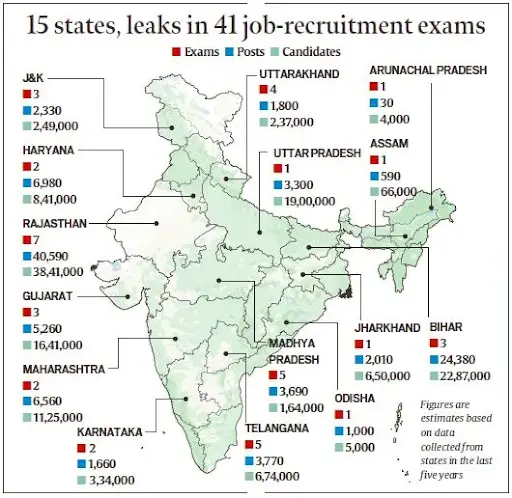
- The National Testing Agency (NTA) released the NEET UG results 2024, drawing attention to the unusually high number of 61 candidates scoring a perfect 720/720 and the controversial near-perfect scores of 718 or 719.
What is the present state of exam paper leaks in India?
- Exam paper leaks and scams have been a significant concern for young voters aged 18-25 in Uttar Pradesh, Rajasthan, Madhya Pradesh, Bihar, and other states.
- Over the past five years, 41 paper leaks in 15 states have affected 1.4 crore job seekers who applied for over one lakh vacancies.
- The transformation of dreams into failure is swift with news of question paper leaks and exam cancellations. For instance, in Uttar Pradesh alone, three major competitive exams for government jobs experienced question paper leaks in 2024.
- The most recent incident was during the UP police constable recruitment exam, which saw over 48 lakh candidates appearing.
- In Rajasthan, question paper leaks for recruitment exams persist at an alarming rate. During the Congress tenure in the state, over 12 paper leaks occurred, evidently influencing the state's legislative elections in December 2023.
Note:
- The brewing outrage among young aspirants, reportedly having a significant impact on the BJP's electoral prospects in the state, should not be ignored. The INDIA bloc adeptly tapped into the youth's uncertainty by proposing fast-track courts and monetary compensation for aspirants.
What are the Impacts of Exam Paper Leaks in India?
- Disruption of Academic Integrity:
- Exam paper leaks compromise the integrity of academic assessments, undermining the credibility of educational institutions and the value of qualifications obtained through these exams.
- Loss of Trust and Confidence:
- Exam paper leaks erode public trust and confidence in the examination system, leading to scepticism among students, parents, and society at large about the fairness and reliability of exam processes.
- Emotional Distress:
- Exam paper leaks cause emotional distress and anxiety among students who have invested time, effort, and resources in preparing for exams. The uncertainty and fear of unfair competition exacerbate stress levels and impact mental well-being.
- Financial Loss:
- Exam leaks cause financial losses for students and families, including coaching fees, study materials, and application fees. Cancelled or rescheduled exams lead to wasted resources and increased financial burden.
- Impact on Career Opportunities:
- Exam paper leaks can derail students' academic and career aspirations by affecting their performance in competitive exams. Lower scores or invalidated results may limit opportunities for higher education and employment, hindering future prospects.
- Disruption of Academic Calendar:
- Exam paper leaks disrupt the academic calendar, leading to delays in exam schedules, admissions, and recruitment processes. This disruption affects educational institutions, students, and employers, causing inconvenience and inefficiencies.
- Political Fallout:
- Exam paper leaks often attract political scrutiny and public outcry, with political parties facing criticism for inadequate oversight and governance of the examination system.
What should be done?
- Enhanced Security Measures: Implement stricter security protocols during the printing, distribution, and administration of exam papers to prevent leaks.
- Use of Technology: Utilise technology such as encrypted question papers, biometric authentication, and secure online exam platforms to minimise the risk of leaks.
- Increased Transparency: Ensure transparency in the exam process by involving independent observers, monitoring mechanisms, and real-time tracking of exam materials.
- Strict Legal Action: Enforce stringent penalties and legal consequences for individuals involved in leaking exam papers, including swift investigation and prosecution.
- Awareness and Education: Educate students, educators, and stakeholders about the consequences of exam paper leaks and the importance of maintaining exam integrity.
- Support for Aspirants: Provide financial and emotional support for aspirants affected by exam paper leaks, including reimbursement of exam fees and counselling services.
Conclusion:
Hence, exam paper leaks can derail students' academic and career aspirations, impacting their performance in competitive exams. Lower scores or invalidated results may limit opportunities for higher education and employment, hindering future prospects.
Source: IE
Issues Faced by the AP Post-Bifurcation
Why in the News?
- Several unresolved issues remain between Telangana and Andhra Pradesh under the Andhra Pradesh Reorganisation Act 2014 (APRA), a decade after their bifurcation.
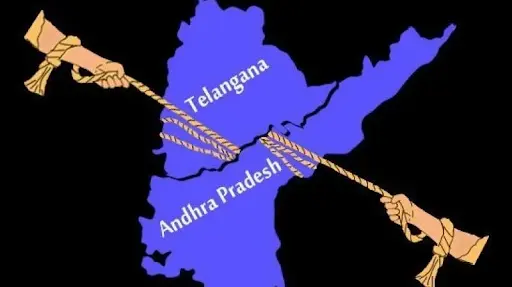
- The TDP's role as a kingmaker in the NDA have largely centred on Chandrababu Naidu's persistent endeavours to obtain Special Category Status for Andhra Pradesh.
What Issues Faced by the AP Post-Bifurcation ?
- State without a capital:
- As per the Andhra Pradesh Reorganisation Act 2014, Hyderabad was designated as the common capital for both Andhra Pradesh and Telangana until June 2, 2024.
- Despite the establishment of interim office spaces and a High Court, successive governments have struggled to transition to Amaravati as the capital.
- Lagging Economic Development:
- Andhra Pradesh's economy has not witnessed significant growth compared to states like Maharashtra and Gujarat. With the exception of Kia Motors in Anantapur, there has been limited investment from major corporations in the state.
- Delayed Major Projects:
- Key projects such as the Polavaram project, the Kadapa Steel Plant, and the South Coast Railway Zone in Visakhapatnam have faced delays due to technical and economic challenges, remaining as unfulfilled aspirations.
- High Revenue Deficit:
- Although the Union government was mandated to assist Andhra Pradesh in bridging its resource gap for 2014-15, the state's revenue deficit has continued to escalate.
- Initial estimates placed the deficit at ₹16,078 crore, which later increased to ₹31,479.88 crore by March 2024.
- Unresolved Issues with Telangana:
- Assets belonging to nearly 245 institutions worth about ₹1.42 lakh crore are yet to be divided between the two states.
- Dependency on Hyderabad:
- Many residents of Andhra Pradesh continue to rely on Hyderabad for essential services like healthcare and education.
- Despite policymakers and bureaucrats relocating, there remains an emotional attachment to the city, possibly contributing to the sluggish progress in Andhra Pradesh.
What Needs to be Done?
- Establishing a Capital in the State:
- The proposal of three capitals by the YSRCP may encounter legal hurdles, while the ambitious capital envisioned by the TDP could face fiscal challenges if welfare schemes promised in manifestos are executed.
- To instil investor confidence, the government must focus on developing a capital with existing resources.
- Development of Infrastructural Facilities:
- Investment in infrastructure can catalyse growth in the industry and service sectors, particularly leveraging the coastal advantage for port-led development, a priority for the Union government.
- Resolution of Pending Issues with Telangana:
- Addressing outstanding issues with Telangana is crucial, including the payment of ₹6,756 crore owed to AP for post-bifurcation power supply.
- Additionally, shifting river management boards and resolving disputes on assets division and water sharing should be prioritised.
- Discussion on Special Category Status to AP:
- Deliberations on granting Special Category Status to AP are essential to compensate for revenue losses incurred post-bifurcation.
- This status would aid in addressing economic disparities and promoting development in the state
|
UPSC Civil Services Examination Previous Year Question (PYQ) Prelims Q:1 The power of the Supreme Court of India to decide disputes between the Centre and the States falls under its (2014)
Ans: (c) |
IPEF Ministerial Meeting 2024
Why in the News?
- Recently, India took part in the Indo-Pacific Economic Framework for Prosperity (IPEF) Ministerial Meeting held in Singapore on June 6th, 2024, highlighting substantial progress in enhancing economic collaboration among partner nations in the Indo-Pacific region.
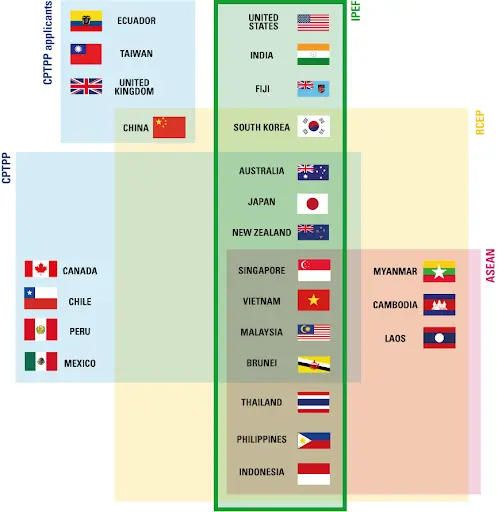
- At the recent Indo-Pacific Economic Framework for Prosperity (IPEF) Ministerial Meeting, members signed three agreements focusing on the Clean Economy, Fair Economy, and the overarching IPEF Agreement.
What is IPEF ?
- About:
- IPEF was launched on May 23, 2022, in Tokyo, Japan, and comprises 14 countries.
- The goal of IPEF is to strengthen economic engagement and cooperation among partner countries, with the aim of advancing growth, economic stability, and prosperity in the region.
- Members:
- Australia, Brunei, Fiji, India, Indonesia, Japan, South Korea, Malaysia, New Zealand, Philippines, Singapore, Thailand, United States, and Vietnam.
- These 14 IPEF partners collectively represent 40% of global GDP and 28% of global goods and services trade.
- Pillars of IPEF:
- Fair and Resilient Trade (Pillar I): Aim: Promote economic growth, peace, and prosperity in the region. India's Status: Observer status in Pillar I.
- Supply-Chain Resilience (Pillar II): Aim: Enhance supply chain resilience, robustness, and integration. Focus: Improve logistics, connectivity, and investments in critical sectors. Emphasis: Enhance worker roles through upskilling and reskilling initiatives.
- Clean Economy (Pillar III): Aim: Advance cooperation on clean energy and climate-friendly technologies. Focus: Research, development, commercialization, and deployment of clean energy. Encourages: Investment in climate-related projects in the Indo-Pacific region.
- Fair Economy (Pillar IV): Focus: Implement effective anti-corruption and tax measures.India's Status: India's strides in improving legislative and administrative frameworks to combat corruption.
What are the Key Highlights of the Meeting?
- Clean Economy Agreement:
- This agreement aims to accelerate efforts toward energy security, climate resilience, and reducing greenhouse gas (GHG) emissions.
- India took a leading role in launching the Cooperative Work Programme (CWP), focusing on recovering valuable resources from electronic waste through e-waste urban mining.
- IPEF Catalytic Capital Fund:
- This fund was established to support clean economy infrastructure projects in IPEF emerging and upper-middle-income economies.
- Founding supporters, including Australia, Japan, Korea, and the US, provided an initial grant funding of USD 33 million to catalyse USD 3.3 billion in private investment.
- Fair Economy Agreement:
- Aimed at creating a more transparent and predictable business environment, promoting fair competition, and enhancing efforts against corruption.
- India highlighted its Digital Forensics & System-Driven Risk Analysis training program, which will be offered to other IPEF partners.
- IPEF Upskilling Initiative:
- This initiative provides digital skills training, primarily targeting women and girls in IPEF partner countries.
- Over the past two years, it has offered 10.9 million upskilling opportunities, including 4 million in India.
Household Consumption Expenditure Survey 2022-23
Why in the News?
- The Ministry of Statistics and Programme Implementation (MoSPI) recently released the detailed report of the Household Consumption Expenditure Survey (HCES) for 2022-23.
- This report Provided valuable insights into the spending habits of rural and urban households across various states.
|
Household Consumption Expenditure Survey:
|
What are the Highlights of the Recent Household Consumption Expenditure Survey?
- Food Expenditure Preferences:
- Beverages, Refreshments, and Processed Food: This category represented the largest portion of food expenditure across many states, with Tamil Nadu showing the highest spending percentages in both rural (28.4%) and urban (33.7%) areas.
- Milk and Milk Products: These were predominantly favoured in the rural and urban households of northern states, such as Haryana (rural 41.7%, urban 33.1%) and Rajasthan (urban 33.2%).
- Egg, Fish, and Meat: Kerala households had the highest expenditure in this category, with rural areas spending 23.5% and urban areas 19.8%.
- Overall Food vs. Non-Food Expenditure:
- Food Expenditure: In rural India, food accounts for about 46% of total household consumption expenditure, whereas in urban areas, it is around 39%.
- Non-Food Expenditure: There has been a notable shift towards higher spending on non-food items. Rural spending on non-food items increased from 40.6% in 1999 to 53.62% in 2022-23, and urban spending rose from 51.94% to 60.83% in the same period.
- Major Non-Food Expenditure Categories:
- Conveyance: This remained the top non-food expenditure in both rural and urban settings, with Kerala having the highest percentages.
- Medical Expenses: Particularly high in rural areas of Kerala, West Bengal, and Andhra Pradesh, and in urban areas of West Bengal, Kerala, and Punjab.
- Durable Goods: Kerala noted the highest expenditure on durable goods in both rural and urban areas.
- Fuel and Light: Significant spending was observed in rural West Bengal and urban Odisha
- Regional Variations:
- Different states exhibited varying preferences for spending on specific food and non-food items, reflecting cultural and regional economic differences.
- Growth in Consumption Expenditure:
- The survey indicates a substantial increase in consumption expenditure over the past decade. Rural monthly consumption per person increased by 164% from 2011-12 to 2022-23, while urban monthly consumption per person grew by 146%.
- Rural monthly per capita consumption has seen faster growth compared to the urban sector in India.
- The difference between the urban and rural MPCE has decreased over the years, with the differential reducing from 90% in 2009-10 to 75% in 2022-23.
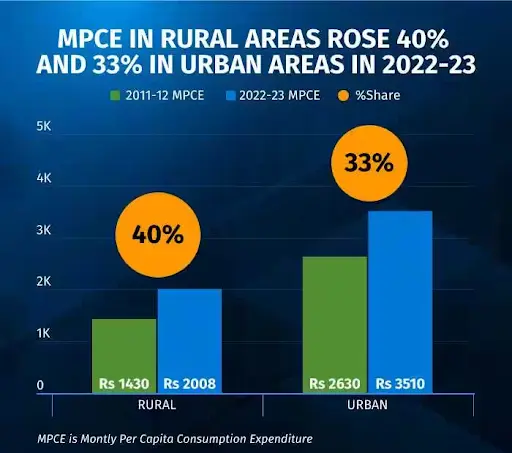
|
UPSC Civil Services Examination, Previous Year Question (PYQ) Prelims: Q:1 As per the NSSO 70th Round “Situation Assessment Survey of Agricultural Households”, consider the following statements: (2018)
Which of the statements given above is/are correct?
Ans: C Q:2 In a given year in India, official poverty lines are higher in some States than in others because (2019)
Ans: (b) |
Scope of Shifting to Proportional Representation
Why in the news ?
- Recently, there is growing consensus among a wide range of citizens and political parties in India that the current First-Past-The-Post (FPTP) electoral system should be replaced with proportional representation.
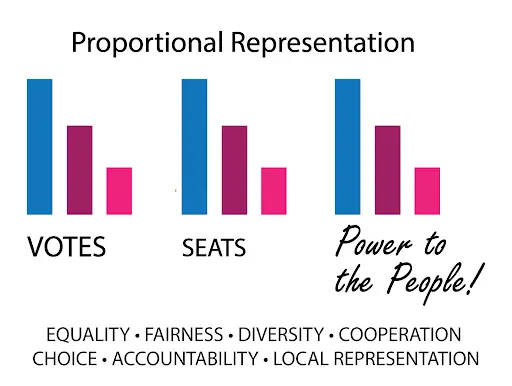
What is First Past the Post System?
- The FPTP is a straightforward electoral system utilised in various countries, including the United States, Canada, the United Kingdom, and India.
- Under this system, the candidate with the highest number of votes in a constituency or district secures the seat, irrespective of whether they have attained an absolute majority (more than 50% of the votes).
Features of the FPTP:
- Voting: Each voter casts one vote for their favoured candidate from a list representing various political parties or independent candidates.
- Counting Votes: Following the close of voting, the votes are tallied, and the candidate garnering the most votes is announced as the victor. There is no stipulation for the winning candidate to secure more than 50% of the total votes cast.
- Winner Takes All: The candidate who acquires the highest number of votes in a constituency or district claims the seat, with other candidates receiving no representation, regardless of their share of the vote.
Significance of the FPTP:
- The FPTP system is regarded as simple and practical, particularly in a vast country like India.
- It offers stability to the executive branch in a parliamentary democracy, as the ruling party or coalition can secure a majority in the Lok Sabha or Legislative assembly without necessarily garnering a majority of votes (over 50%) across constituencies.
Criticism of the FPTP :
- A common critique is its potential to yield disproportionate representation, where parties with substantial overall support may not win a proportional number of seats.
- It can lead to either over or under-representation of political parties compared to their share of the vote.
- The system tends to discourage smaller parties or independent candidates from participating, as they may struggle to secure seats.
- Elected representatives often prioritise constituents who voted for them, fostering vote-bank politics and competitive or sectoral politics to ensure re-election
Proportional Representation (PR):
- PR is an electoral system designed to allocate seats in a legislative body in proportion to the votes received by each participating political party or group.
- Unlike First Past the Post (FPTP), where the candidate with the most votes in each constituency wins, PR strives to align the composition of the legislative body with the overall distribution of voter preferences.

Various types of proportional representation systems:
- Party List PR:
- Voters vote for a political party instead of individual candidates.
- Seats are allocated to parties based on the proportion of votes each party receives.
- Parties present a ranked list of candidates, and seats are filled according to this list.
- Mixed-Member Proportional (MMP):
- Combines aspects of both FPTP and PR.
- Voters cast two votes: one for a local candidate and one for a political party.
- Some seats are filled by winners of local races, while additional seats ensure overall proportionality based on party votes.
- Single Transferable Vote (STV):
- Voters rank candidates in order of preference in multi-member constituencies.
- Candidates are elected based on reaching a certain quota of votes, with surplus votes redistributed until all seats are filled.
- Mixed-Member Majoritarian (MMM):
- Blends FPTP with proportional seats.
- Some seats are won through FPTP, while additional seats ensure overall proportionality based on party votes.
Significance of Proportional Representation:
- Fairer Representation: Proportional representation aims to ensure that the distribution of seats in the legislative body closely reflects the overall distribution of voter preferences, providing a more accurate representation of the electorate's views.
- Inclusiveness: It allows for a wider range of political viewpoints to be represented, ensuring that minority parties and smaller groups have a voice in the legislative process.
- Reduction of Wasted Votes: By aligning seat allocation with the proportion of votes received, fewer votes are wasted, which can increase the overall sense of voter efficacy and satisfaction.
- Encouragement of Voter Turnout: The perception that every vote counts in a proportional representation system can lead to higher voter turnout, as people feel their vote is more likely to influence the outcome.
- Coalition Building: It often necessitates coalition governments, encouraging parties to work together and collaborate on policies, which can lead to more balanced and comprehensive governance.
- Mitigation of Extremism: By representing a broader spectrum of political views, proportional representation can help mitigate the influence of extremist positions and promote moderate policymaking.
Criticism of PR:
- Potential for Instability: The PR system could result in instability as no party or coalition may obtain a majority to form the government in a parliamentary democracy.
- Slow Decision-Making: Some experts assert that the PR system slows down decision-making, weakening the government itself.
- Minority Parties' Influence: Extreme pluralism can allow tiny minority parties to hold larger parties to ransom in coalition negotiations, making the inclusiveness of the PR system a drawback.
- Reduced Accountability: The PR system may reduce accountability to voters because an ousted party can still remain in office by forming new coalitions after an election.
- Difficulty Removing Centre Parties: Under a PR system, it may be challenging to remove a reasonably sized centre party from power.
Way Ahead
- Addressing FPTP Discrepancies: Efforts should be made to reduce the flaws and discrepancies of the First-Past-The-Post (FPTP) system to ensure India’s democratic system better reflects the will of the people.
- Balanced Representation: There is a consensus that both the ruling party and the opposition are crucial for the sustainability and effective functioning of democracy. Ensuring fair representation for the opposition is essential.
- Historical Impact of FPTP: The FPTP system has historically resulted in the significant reduction or elimination of the opposition, as seen in the elections of 1984, 2014, and the first three general elections after Independence.
- Law Commission's Recommendation: The Law Commission, in its 170th report titled "Reform of the Electoral Laws" (1999), recommended the introduction of the Mixed-Member Proportional Representation (MMPR) system on an experimental basis.
- Proposed Implementation: It was suggested that 25% of the seats could be filled through a proportional representation system by increasing the strength of the Lok Sabha
|
UPSC Civil Services Examination Previous Year’s Question (PYQs) Prelims: Q:1 Consider the following statements: (2017)
Which of the statements given above is/are correct?
Ans: (d) Mains: Q:1 Discuss the role of the Election Commission of India in the light of the evolution of the Model Code of Conduct. (2022) |
Source: TH
Share the article
Edukemy’s Current Affairs Quiz is published with multiple choice questions for UPSC exams
MCQ
Get Latest Updates on Offers, Event dates, and free Mentorship sessions.

Get in touch with our Expert Academic Counsellors 👋
FAQs
UPSC Daily Current Affairs focuses on learning current events on a daily basis. An aspirant needs to study regular and updated information about current events, news, and relevant topics that are important for UPSC aspirants. It covers national and international affairs, government policies, socio-economic issues, science and technology advancements, and more.
UPSC Daily Current Affairs provides aspirants with a concise and comprehensive overview of the latest happenings and developments across various fields. It helps aspirants stay updated with current affairs and provides them with valuable insights and analysis, which are essential for answering questions in the UPSC examinations. It enhances their knowledge, analytical skills, and ability to connect current affairs with the UPSC syllabus.
UPSC Daily Current Affairs covers a wide range of topics, including politics, economics, science and technology, environment, social issues, governance, international relations, and more. It offers news summaries, in-depth analyses, editorials, opinion pieces, and relevant study materials. It also provides practice questions and quizzes to help aspirants test their understanding of current affairs.
Edukemy's UPSC Daily Current Affairs can be accessed through:
- UPSC Daily Current Affairs can be accessed through Current Affairs tab at the top of the Main Page of Edukemy.
- Edukemy Mobile app: The Daily Current Affairs can also be access through Edukemy Mobile App.
- Social media: Follow Edukemy’s official social media accounts or pages that provide UPSC Daily Current Affairs updates, including Facebook, Twitter, or Telegram channels.


